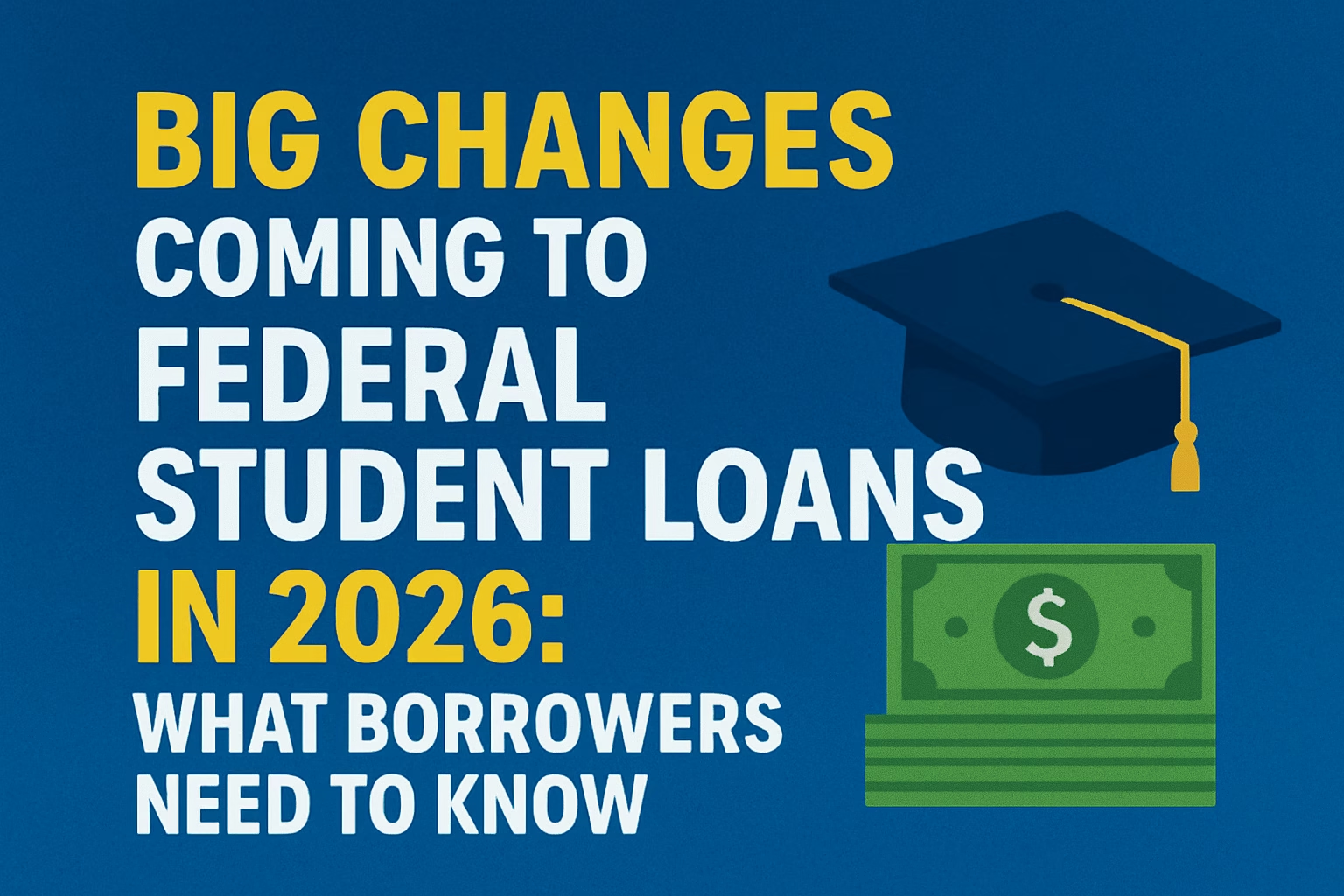For decades, student loans have been the biggest support for college education in America. Millions of students and their families depend on them to pay for their education. But from 2026, big changes are going to come in it, which can change the way Americans borrow, repay, and manage loans. If you are a student, a graduate, or preparing for your children’s education, then it is important to know what is going to change in the future.
Background: Why 2026 Matters
Student loan policy in the US has always been a hot topic. Over the past few years, we have seen a lot of debate over loan forgiveness, payment deferrals during the pandemic, and ever-rising tuition fees. Now, amid budget constraints and political fights over government spending, Congress has approved changes that will come into effect from 2026. These changes include things like loan limits, repayment programs, and reductions in grants.
Key Changes to Federal Loans in 2026
1. Borrowing Limits Will Be Adjusted
For graduate students, the annual loan limits are often stricter compared to other students. For students who borrow large amounts of money, the limits may also be reduced. In such a situation, they may need to raise funds through private loans or some other means.
2. Repayment Plans May Be Restructured
There are plans to make the income-based loan repayment programs (IDR) a little easier. This means the system will be simple, but the problem is that people who want more flexibility in repaying installments may now have fewer options.
3. Subsidies and Grants Could Shrink
There may be a reduction in Pell Grants and other government aid programs. This will directly affect students from low-income families. In such a situation, they may have to depend more on loans for studies.
4. Interest Rates Likely to Rise
Because the cost of borrowing from the government is rising, student loan interest rates may also rise. This means that repaying the loan will become more expensive in the long run.
Who Will Be Affected the Most?
- Current Student: For students who are currently pursuing studies, the changes of 2026 can determine how much money they will be able to borrow in the coming years.
- High School Seniors (Class of 2026): These students will be going to college after the new loan policy is implemented, so they should start looking for other funding options right now.
- Parents: Limits and interest rates on Parent PLUS loans may increase, making it more difficult for parents to cover full education costs.
- Graduates in Repayment: Those who are already repaying loans may have to adopt new repayment systems, especially if old schemes are gradually phased out.

Why Are Cuts Happening?
The US government is under pressure to reduce the deficit, and student loans are a huge part of government spending. Critics say that without a limit on loans, college fees are higher. On the other hand, supporters of the reduction believe that strict limits will make people use money more responsibly. On the other hand, many education experts warn that if access to loans becomes difficult, low and middle-income students will suffer.
Possible Benefits of the Changes
Even though ‘cuts’ may sound negative, policymakers point out some positive aspects as well:
- Preventing excessive borrowing so that the burden of heavy debt is not created later.
- Encouraging students to consider options such as low-cost colleges or community colleges.
- Making the loan repayment process easier so that borrowers are not troubled with too many complex plans.
Risks and Concerns Borrowers Should Watch For
Despite the benefits, there are some major concerns too:
- Higher Out-of-Pocket Costs: Students may have to rely on savings, part-time jobs, or private loans to cover their education expenses, but private loans often come with higher interest rates.
- Reduced Access for Low-Income Students: If Pell Grant aid is reduced, it could become difficult for many students to afford college.
- Uncertainty: Changes in government regulations often lead to court cases and political battles, leaving families confused about how to plan ahead.
What Borrowers Should Do to Prepare
- Plan Early – If you are going to go to college in 2026 or later, then estimate now how much your education will cost and where you might fall short.
- Seek Scholarships and Grants – Apply for as much free aid (like scholarships or grants) as you can to reduce your debt.
- Consider Affordable Alternatives – If state aid decreases, lower-cost colleges, such as community colleges or state universities, may become better options.
- Stay Updated – Keep an eye on Department of Education updates and stay in touch with your college’s financial aid office.
Conclusion
Major changes are coming to the federal student loan system in 2026. Changes to borrowing limits, repayment plans, and grant funding may make it more difficult for students and families to afford their education. Loans will still be important in making college affordable, but financial planning will take more thought and preparation than ever before.
By gathering the right information and understanding all financial aid options, students can continue to pursue their educational goals despite major changes to the student loan system.
Also Read:
What student loan repayment will look like after Trump’s budget bill
How Much Money Goes Through the Stock Market Daily in USA? Complete Guide with 5 Amazing Facts
Amex Platinum Credit Card Review 2025: 10 Amazing Benefits, Rewards & Fees Explained












